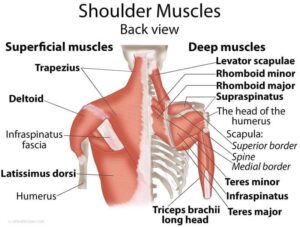The Case for Functional Range Conditioning and Ashtanga Yoga
Listen, if you’ve been in my yoga shala or done a done an intake as a private student, you’ll see pretty quickly how often I used the tools that are under the banner of Functional Range Conditioning. It’s because the integration of Functional Range Conditioning (FRC) with Ashtanga Yoga is a fairly straightforward process that can dramatically change the way in which a practitioner conceives of their practice, offering something holistic in approach and promises to enhance flexibility, strength, and general body health.
What is FRC?
Functional Range Conditioning (FRC) is a comprehensive system focused on improving and optimizing the body’s range of motion, joint health, and overall mobility. It employs scientific principles and methods to expand the body’s functional movement capabilities, emphasizing controlled and progressive exercises to increase joint resilience and strength. FRC aims to systematically enhance both flexibility and stability across all joints, thus promoting sustainable physical health, reducing injury risks, and improving athletic performance. The approach is rooted in understanding and training the body’s complex muscular and skeletal interactions, offering a holistic enhancement of movement efficiency and quality.
Revisiting Muscle Dynamics in Ashtanga Yoga
Often in yoga, muscle function is oversimplified, with focus on linear movements. However, muscles operate within a complex system, enabling a variety of movements. Ashtanga Yoga, when combined with FRC, encourages a multi-dimensional approach to muscle engagement, offering a deeper, more holistic practice.
We’ve been incorporating FRC principles at my yoga shala for over 6 years now, and I can say confidnently that it significantly enriches the practice of Ashtanga Yoga. It goes beyond just perfecting asanas; it’s about improving the functional health of your joints and muscles, adding a new dimension to your yoga routine.
A Wealth of Options in Traditional Asanas
When we hold a yoga pose without moving, while increasing our muscular engagement, we’re participating in something called an isometric. This means lots of muscle, and no movement. This is a little different than something like a squat or a deadlift– gym activities that have names (you could argue that a wall-sit counts as an isometric, but I digress). Typically, named exercises and asanas suggest fixed movement patterns, which can limit muscular engagement. We want to get strong in all directions, not just linear paths. The same is true in our approach to asana– not missing any pieces of strength or flexibility in the middle. Thus, FRC’s approach in Ashtanga practice encourages exploration beyond these rote confines, enabling a fuller, more dynamic engagement of muscles.
This is in contrast to the typical ‘all-or-none’ mindset to fixed machines, named exercises, etc. Doing postures just one way all the time runs the risk of only engage a fraction of our muscular capacity. when there’s a whole wealth of movement potentials and options. FRC’s methodology within Ashtanga Yoga encourages varied asana modifications to stimulate diverse muscle fibers, maximizing muscle engagement and efficiency.
Addressing Training Plateaus and Injury Prevention
Repetitive exercise patterns can lead to plateaus and injuries. Integrating FRC within Ashtanga Yoga practice emphasizes the importance of introducing variations to promote comprehensive muscle development and prevent injuries. This makes sure we’re being more holistic– keeping our bones and joints in top form.
While often neglected, joint health is fundamental for effective movement. FRC’s focus on joint health complements Ashtanga Yoga’s goals, leading to smoother pose transitions and deeper asana execution.
This means working from thew body into the mind, and then from the mind into the body with specificity. This is often called Internal training. Internal Training, a core principle of FRC, emphasizes improving joint function and natural movement patterns. This aligns seamlessly with Ashtanga Yoga’s focus on internal awareness and the nuances of movement, paving the way for an intuitive, injury-free practice.
A Holistic Approach to Ashtanga Yoga
Incorporating FRC into Ashtanga Yoga isn’t just a theoretical concept; it’s a practical approach to enhancing your practice. Understanding the complexities of muscles and joints and embracing a holistic approach can transform your Ashtanga practice into a more dynamic, aware, and safe experience. Every time you step onto your mat, remember that each pose is not just a physical posture, but an opportunity to engage with your body’s incredible capabilities in new and enlightening ways. 🙏✨





Very interesting Michael. It makes sense. Thank you.
Thanks, Grace!
Here’s a link to the FRC 101 study guide If you want to dig a little deeper.
https://ashtanga.tech/study-guide/yoga-techniques/functional-range-conditioning/frc-101/
Here’s the course on how to apply it to ashtanga: https://ashtanga.tech/courses/functional-ashtanga-applying-frc-to-the-counted-method/